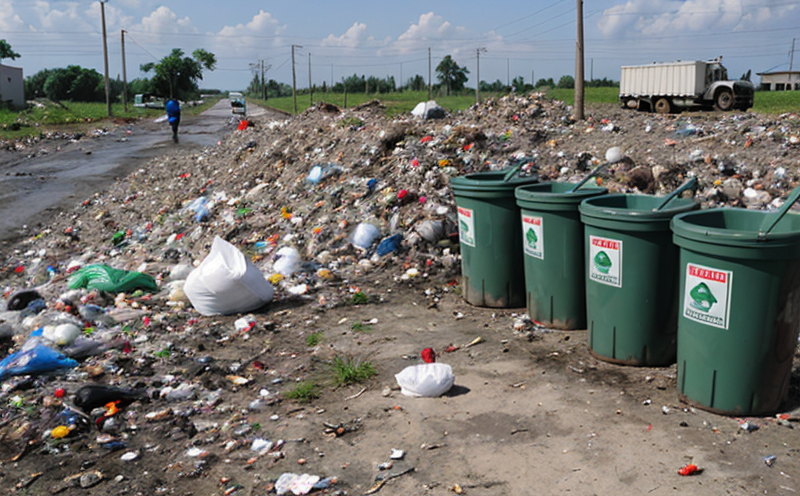EPA 8082 Polychlorinated Biphenyls PCB in Solid Waste Test
The EPA method EPA 8082 is a critical tool for assessing the presence of polychlorinated biphenyls (PCBs) in solid waste materials. PCBs are toxic, man-made chemicals that were widely used until their production was banned by the EPA in 1977 due to significant health and environmental risks.
This test is particularly important for industries involved in waste management, recycling processes, and hazardous waste disposal. Ensuring compliance with EPA regulations not only mitigates risk but also contributes positively to the environment by preventing the release of harmful substances into soil, waterways, and air.
The method involves several steps: sample preparation, extraction, clean-up, derivatization, and analysis using gas chromatography (GC) coupled with mass spectrometry (MS). This approach ensures accurate quantification of different PCB congeners present in the solid waste. The goal is to identify and measure the levels of individual PCB compounds to determine if they exceed regulatory thresholds set by the EPA.
Understanding the presence and concentration of PCBs helps facilities comply with stringent environmental regulations, such as those found in Title II of the Resource Conservation and Recovery Act (RCRA) and the Toxic Substances Control Act (TSCA). These regulations aim to protect public health and the environment from the adverse effects of hazardous substances.
For quality managers, compliance officers, R&D engineers, and procurement professionals involved with waste management or recycling processes, ensuring accurate testing is essential. EPA 8082 provides a reliable means to assess the safety of materials before they are reintroduced into the environment through recycling or disposal.
Scope and Methodology
| Step | Description |
|---|---|
| Sample Collection | Representative samples are collected from the waste material, ensuring they cover a range of potential contamination levels. |
| Extraction | Hexane is used to extract PCBs from the solid matrix. This step ensures that all target compounds are released for analysis. |
| Cleanup and Derivatization | The extracted mixture undergoes cleanup steps followed by derivatization with tert-butyldimethylsilyl (TBDMS) to enhance the stability of PCB congeners during GC-MS analysis. |
| Analysis | The cleaned and derivatized sample is analyzed using gas chromatography coupled with mass spectrometry. The resulting data allows for precise identification and quantification of each PCB congener present in the solid waste. |
This comprehensive approach ensures that all relevant PCB congeners are identified, providing a detailed profile of the chemical composition within the tested material. The methodology is designed to be robust enough to detect even trace amounts of PCBs, ensuring compliance with stringent regulatory standards.
International Acceptance and Recognition
EPA 8082 is widely recognized internationally for its accuracy and reliability in measuring PCBs. It aligns with global standards such as ISO 17025, which ensures the competence of testing laboratories to perform specific tests consistently.
The method has been adopted by numerous countries and organizations around the world due to its stringent quality control measures and reproducible results. Organizations like the European Union (EU) have adapted EPA 8082 for their own waste management regulations. For example, Directive 2006/12/EC on Waste Framework sets similar standards that align with EPA guidelines.
By using EPA 8082, laboratories can ensure they meet international standards and are recognized by regulatory bodies worldwide. This recognition enhances the credibility of test results and facilitates compliance across borders.
Environmental and Sustainability Contributions
The accurate identification and quantification of PCBs in solid waste through EPA 8082 plays a crucial role in environmental protection. By detecting even small amounts of these hazardous substances, the method helps prevent their release into the environment. This is particularly important for recycling processes where PCB-containing materials might otherwise be reintroduced into natural systems.
Compliance with such testing protocols also supports sustainability efforts by encouraging responsible waste management practices. Facilities that adhere to EPA 8082 contribute positively to environmental health and safety, thereby promoting a more sustainable future.
The method contributes significantly to the reduction of risks associated with PCB exposure. By identifying contaminated materials early in the lifecycle, facilities can take appropriate measures to handle them safely, such as segregation or proper disposal techniques that minimize environmental impact.





